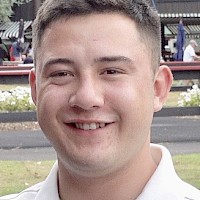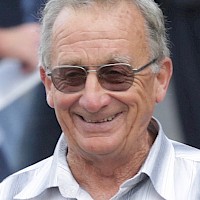
Harness boss warns regional racing is on the way - but it’s too soon for all the details
When harness racing does resume in New Zealand you can take it for granted that it will be based on a regional model, says the code’s boss Peter Jensen.
Just exactly what that might mean for trainers and their horses has yet to be finalised but Jensen says work is underway to introduce a framework similar to the one which starts in Victoria on Thursday.
Harness Racing Victoria has divided the state into six regions, and will conduct meetings on only nine tracks, with participants in each region unable to race elsewhere.
The Inner West region will race at Melton and Ballarat, West at Terang and Stawell, East at Kilmore and Cranbourne, North West at Mildura, Central at Bendigo and North East at Shepparton, with three tiers of stakemoney.
The changes are designed to limit travel by participants, in line with public health recommendations on slowing the spread of coronavirus.
Jensen says work on adopting regional racing here was underway even before the shutdown a week ago.
Jensen said it was too soon to detail the regions and couldn’t specualte on whether the six designated provinces might be Southland, Otago, Canterbury, Manawatu, Waikato and Auckland.
He could not say yet whether that might mean racing is completely centralised at Ascot Park, Forbury Park, Addington, Palmerston North, Cambridge and Alexandra Park or include a few other tracks.
Horse populations in each area would need to be established, particularly in centres like Palmerston North, which is not due to restart until October and relies on visiting horses, and further north where numbers are already low.
 Peter Jensen … “the fewer venues we race at, the more you can control this.”“Our handicapper and senior racing club managers are processing that this week, talking to trainers, but the fewer venues we race at, the more you can control this. Most people accept we’re racing at too many venues.”
Peter Jensen … “the fewer venues we race at, the more you can control this.”“Our handicapper and senior racing club managers are processing that this week, talking to trainers, but the fewer venues we race at, the more you can control this. Most people accept we’re racing at too many venues.”
In Victoria, every participant has been assigned a specific region in which they are allowed to compete.
Jensen says it’s more likely that the movement of people between regions would be restricted here, rather than the movement of horses, in line with the ban on inter-island travel by personnel that was instituted while racing was still going ahead with only essential people on course.
“There will be clear protocols on those tracks that we race on.”
Jensen says with horses from public training tracks out spelling and others being worked only slowly on private tracks, racing won’t be able to resume immediately even when the COVID-19 alert level drops to three.
“We won’t have a fit horse population but after talking with the trainers we’ll have a better understanding of how much time they think they’ll need.”
While truncated race meetings could be held with say only 50 or 60 horses, it was important that they remained profitable.
“It’s important to have product available but we’re working in conjunction with the TAB to make sure the affordability makes sense.
“Our first priority is a resumption of racing and the second is what next season and beyond will look like and what the financial implications are.
“We’re consulting stakeholders to find to what can work for the industry and the TAB.”
Just how HRNZ tackles the issues of feature races and revised prizemoney will be keenly awaited by trainers and owners alike.
Sensible for survival
Trots Clubs Victoria president Tim Scala said the regional model made sense.
“We want to survive as an industry and come out the other side of this.
“It will mean that some clubs will have their racing transferred to another track or region, but we need to be happy that there will still be clubs operating.”
Victorian Trainers’ and Drivers’ Association president Lance Justice welcomed the move.
“Naturally there will be some who would like to have been assigned to another region or race at other tracks,” Justice said. “I understand that, but we must unite to support this model so we can continue earning prize money and paying the bills.”
More news in Harness
The dream’s alive but Nate tells why he’ll wait for ‘Harry’ before racing Eric again
Ray gives reformed Rascal his ‘most likely to succeed’ report from the pole on Friday night
Ray doesn’t pull any punches about Sugar Ray but punters weigh in nonetheless
Partners and pedigree made Johnny Lincoln’s win special - but where was everyone?
Our runners this week: How our trainers rate them

Nathan’s comments
Thursday night at Cambridge
Race 1: Im Not The Maid
5.14pm
“She went pretty well last week considering they came a fast last half (56.3) and she sat parked from the 800. She’s back to the amateur grade, and should get a good run from the two draw, so hopefully we can get a bit of cash.”
Race 4: Dreams Of Eric
6.38pm
“He didn’t handle the right-handed bends at Auckland last week (galloping at the 300) so we’ll stick to Cambridge from now on. There’s a bit of gate speed in the race so Harry (Harrison Orange) should be able to sit in somewhere. I think he’s a good chance to run top three.”

Ray’s comments
Friday night at Auckland
Race 1: Leo Lincoln
5.59pm
“He’s racing very well. He would have run second last week (to American Me) had he not spooked at the winning post. These are tidy horses he’s racing against but he’s holding his own.”
Race 1: Kevin Kline
5.59pm
“He’ll go better back to a mobile start. He did well to finish so close last week after a slow start than having to do all the donkey work when parked for the last lap. Maurice really likes him because he just puts him into cruise control and he keeps going.”
Race 3: Lincoln Downs
6.58pm
“She’s not as good as the other filly but some lift their game when the money’s up so maybe she can pick up a cheque.”
Race 3: Lincoln’s Spice
6.58pm
“She looks a pretty decent chance of winning. She’s a real little tradesman, does nothing wrong, is easy to handle, is a nice drive, tries hard, is great gaited and has the potential to get stronger.”
Race 5: Tyson
7.51pm
“We found out he raced with a virus last time. The next morning snot was pouring out his nose and that’s why he didn’t finish it off as well as we expected. He only whacked away in the run home. With that gone, he should race better.”
Race 5: Johnny Lincoln
7.51pm
“I think he’ll be competitive and he’s the best of ours in the race. He won well last week and has trained on well. He’s promising. I couldn’t go as far as to say he’s a classic colt yet but we’ll find out soon enough.”
Race 5: Sugar Ray Lincoln
7.51pm
“He’s doing my head in. He had no excuse for breaking last week. Maurice (McKendry) didn’t blame the wet track. He said he was gliding along, travelling beautifully, when for no apparent reason he put in big steps. I’ll put a hood on him this time to see if it’s a nervous issue.”
Race 8: The Rascal
9.23pm
“All going well, he should win what is a poor maiden field. He’s elevated himself from the transfer list and is going well now. He doesn’t have huge gate speed, so he may not lead but he should get a good trip from one. On paper, he’s our best chance of the night.”


